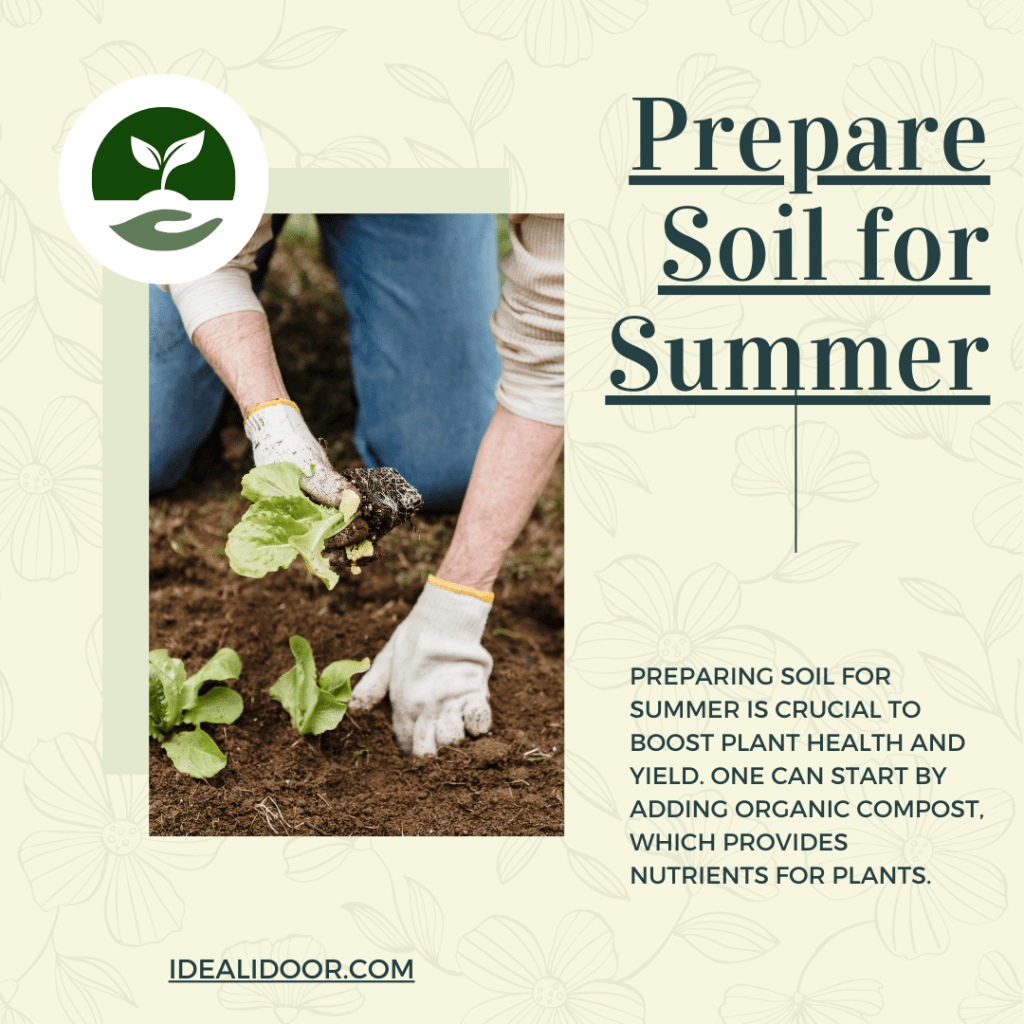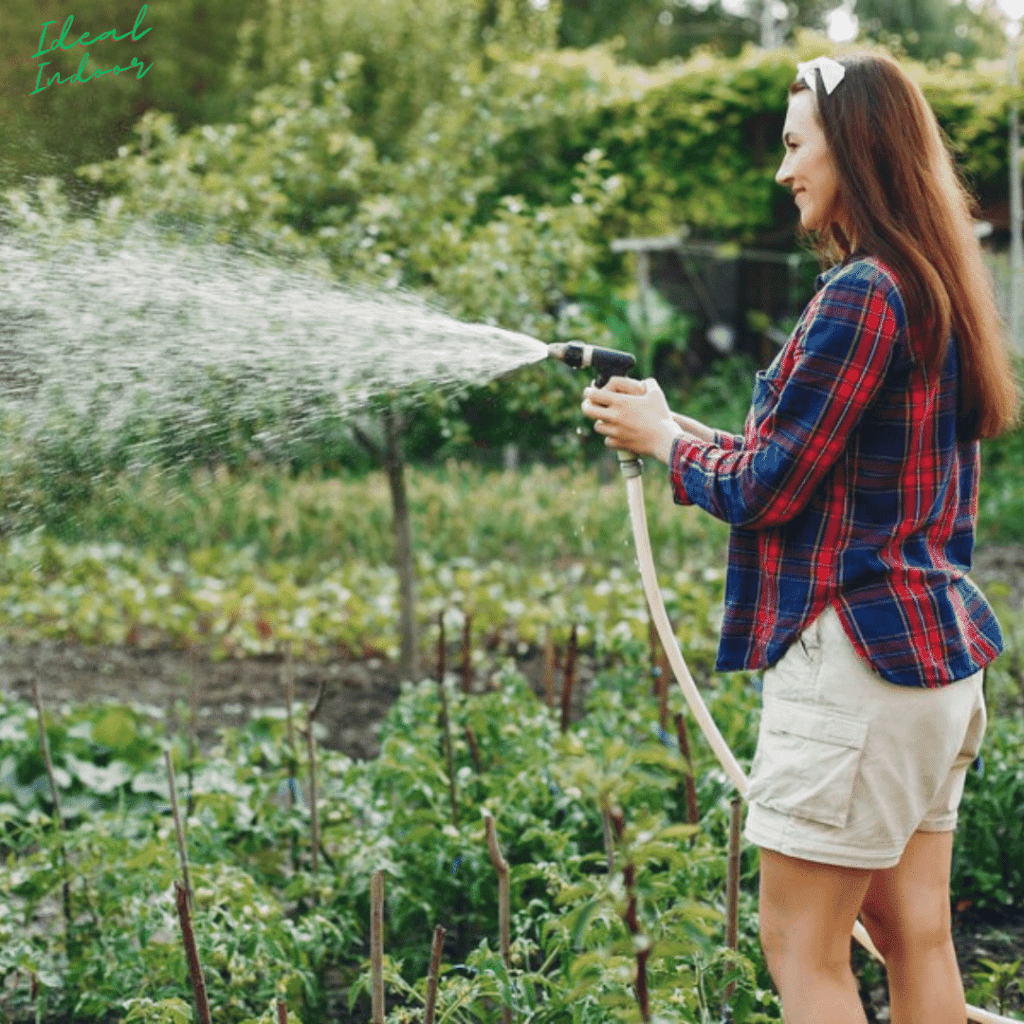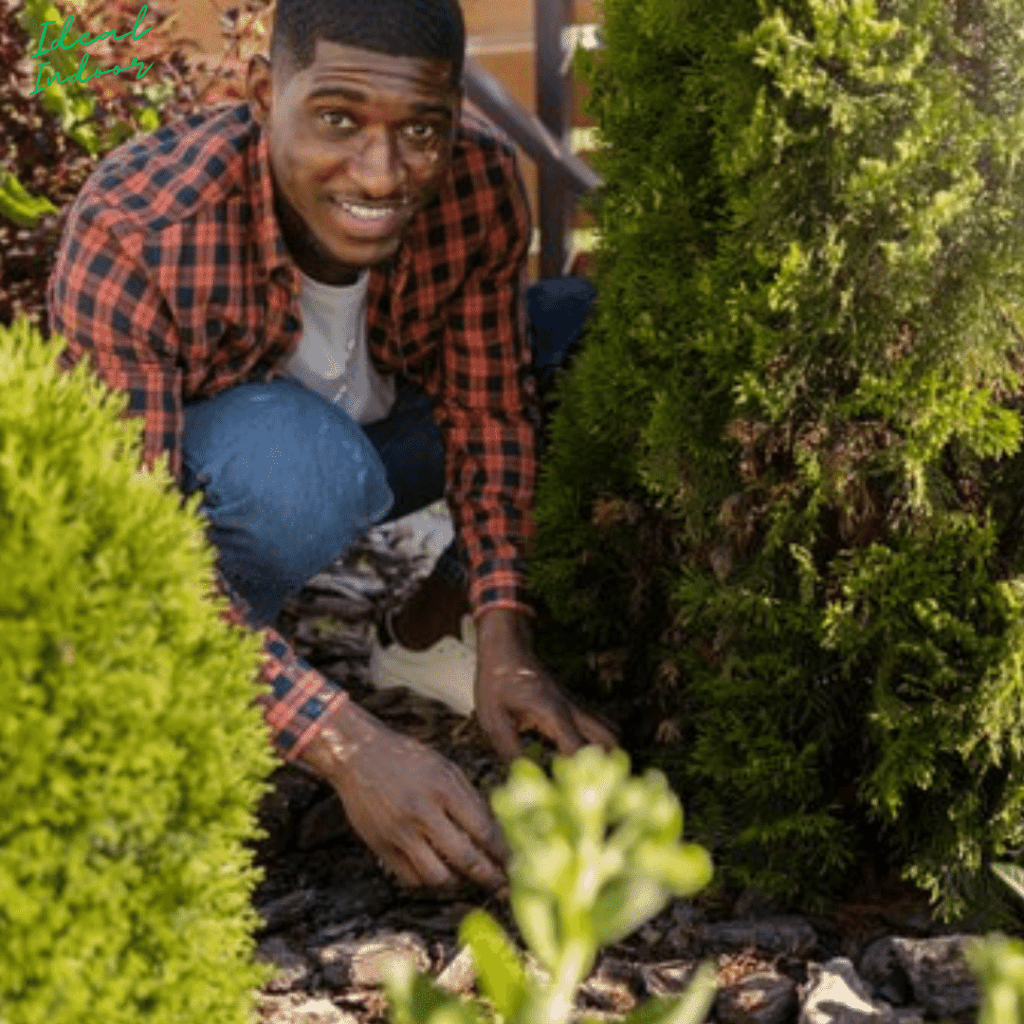To prepare soil for summer, start by clearing debris and testing pH levels. Amend the soil with compost and organic matter to enhance fertility.
Summer brings warmth and an abundance of light, both of which can stress garden soil. As temperatures climb, gardeners face the challenge of prepping their soil to endure the heat and support healthy plant growth. Ensuring your soil is ready for summer requires a few simple but crucial steps.
Clearing the garden of weeds and debris not only tidies the space but also prevents pests and diseases. It’s essential to test the soil’s pH since plants thrive in different pH levels; adjusting it accordingly will ensure nutrient availability. Enriching the soil with compost improves structure, water retention, and nutrient content, setting the stage for a bountiful season. Considering these steps, your garden will be prepared to flourish throughout the summer months.
The Importance Of Soil Preparation
Preparing soil for summer is crucial to boost plant health and yield. One can start by adding organic compost, which provides nutrients for plants. Testing the soil’s pH level is important, as it affects plant growth. Adjusting the soil pH, depending on plant needs, is necessary.
Ensuring the soil has good drainage avoids water logging that harms roots. Aeration is key, so loosening the soil helps roots to breathe. Keeping the soil moist is vital in summer heat. Yet, water should never stand. Mulching prevents water loss and guards against weeds. Each step greatly improves conditions for summer crops.
Analyzing Soil Composition
Preparing soil for summer requires knowing its composition. Conduct a soil test to find out what your soil needs. You can get a soil testing kit from a local nursery or an extension service. This test will reveal nutrient levels and pH balance, guiding you to amend the soil properly.
Determining your soil type is crucial. Clay soils are heavy and hold water well but may lack aeration. Sandy soils are light and drain quickly but may not retain nutrients. Loam soils are ideal, with a balance of clay, sand, and silt. By identifying the soil type, you can tailor your amendments to create the perfect environment for your plants.
Soil Type | Characteristics | Action Needed |
Clay | Heavy, holds water | Add compost for aeration |
Sand | Light, drains quickly | Incorporate organic matter to retain nutrients |
Loam | Well balanced | Maintain with regular composting |
Soil Amendment Strategies
Preparing soil for summer takes careful planning. Soil pH levels are crucial for plant health. Test soil with a pH meter or kit. Lime can raise pH, making soil more alkaline. For acidic soils, sulfur or aluminum sulfate can lower pH levels. A balanced pH allows plants to access nutrients effectively.
Rich organic matter boosts soil quality. Compost, manure, and leaf mold enhance nutrient content. They also improve soil structure and water retention. Mix organic matter into soil before planting. Earthworms love organic-rich soil. They help to aerate it. This makes roots grow strong. A thriving summer garden starts with fertile soil.
Water Retention Techniques
Incorporating mulch and compost is crucial for soil preparation before summer. Mulch conserves moisture and shields the soil from harsh sun rays. Applying a layer of organic mulch does wonders. It keeps the soil cool and reduces evaporation. Compost adds vital nutrients. This natural fertilizer improves soil structure and boosts water retention.
Using cover crops can protect and enrich the soil. Plants like clover and alfalfa act as a living mulch. They cover the soil, which prevents erosion. Their roots increase soil stability and sustain beneficial microbes. When tilled under, cover crops enhance soil fertility. This natural process prepares your garden for a bountiful summer.
Pest And Weed Management
Pest and weed control is crucial before summer. Starting early helps protect plants. Use preventative measures to reduce future issues. Organic methods are safe and effective.
Physical barriers like row covers can block pests. Biodegradable mulches prevent weed growth. Establishing beneficial insects early can check pest populations. Weed seeds often die in hot composting.
- Mulches– Stop weeds and maintain moisture.
- Companion planting– Deters pests naturally.
- Natural predators– Ladybugs eat aphids.
- Neem oil– Organic pesticide, stops fungal diseases.
Tillage Practices
Tillage refers to the process of preparing soil by digging, stirring, and overturning. It has both positive and negative effects on the garden. Tilling helps to aerate the soil, mix in nutrients, and remove weeds. On the downside, it can also disrupt soil structure, harm beneficial organisms, and lead to erosion.
With no-till gardening, soil is left undisturbed, which preserves its structure and the beneficial organisms within. This approach also reduces erosion and improves water retention. While it might limit immediate soil manipulation, over time, no-till plots become rich and fertile through natural processes.
Irrigation Systems For Summer
Soil preparation for summer demands special attention to irrigation. Introducing a drip irrigation system can be a game changer. It ensures direct watering to plant roots, minimizing waste. Installation is straightforward but requires strategic planning.
Drip irrigation emitters should be placed at regular intervals. This aligns with plant spacing for optimal water distribution. The right watering schedule heavily influences plant health. A balance is critical to avoid over-watering or under-watering. An initial guide could start with early morning irrigation. This helps to reduce evaporation and provides moisture for the day ahead.
Fertilization Techniques
Preparing soil for summer boosts plant health. Selecting the right fertilizer is crucial for gardeners. Nitrogen, phosphorus, and potassium are key nutrients for growth. Organic options, like compost, support eco-friendly gardening. They provide essential nutrients over time.
Knowing your soil type helps choose the correct fertilizer. Soil tests reveal nutrient needs. Experts suggest slow-release fertilizers for sustained feeding. Time-release formulas also ensure proper nutrition during summer.
Applying fertilizer at the right time is important. Early season application gives plants a strong start. Follow package directions for best results. Reapplication times vary depending on the product.
Here are highly recommended fertilizers available on Amazon that can help improve your soil before summer:
Jobe’s Organics All-Purpose Fertilizer Spikes:
- These organic fertilizer spikes provide a slow-release nutrient boost to promote healthy plant growth and improve soil quality. They are easy to use and are suitable for a variety of plants in your garden.
Espoma Organic Garden Tone Herb and Vegetable Food:
- Specifically formulated for herbs and vegetables, this organic fertilizer from Espoma is rich in essential nutrients to enhance soil fertility and support robust plant growth. It is safe for use around kids and pets.
Dr. Earth Organic 5 Tomato, Vegetable & Herb Fertilizer:
- Perfect for preparing your soil for summer planting, this organic fertilizer from Dr. Earth is high in beneficial microbes and nutrients that promote soil health and plant vitality. It is specially designed for tomatoes, vegetables, and herbs.
Jobe’s Organics Vegetable & Tomato Fertilizer Spikes:
- These organic fertilizer spikes are tailored for vegetable and tomato plants, providing a balanced blend of nutrients to enrich the soil and ensure abundant yields. They are easy to apply and work well for container gardens and raised beds.
Miracle-Gro Water Soluble All Purpose Plant Food:
- A popular choice for many gardeners, this water-soluble plant food from Miracle-Gro is packed with essential nutrients for all types of plants, flowers, and vegetables. It is quick and easy to apply and provides fast-acting results to boost soil fertility before summer planting.
These fertilizers are highly rated and trusted options that can help prepare your soil for the upcoming summer season, ensuring optimal conditions for your plants to thrive.
Regular watering after fertilization helps nutrients reach roots. Avoid over-fertilizing, which can harm plants. By following these tips, gardeners can ensure a lush, vibrant garden throughout the hot summer months.
Monitoring And Maintenance
Regular soil testing is key to a thriving summer garden. Test your soil at least once a year. This reveals pH levels and nutrient needs. Simple kits are found at garden stores. Follow the instructions closely for best results.
Here are five practical tips to help you accurately measure the pH level of your soil before the summer planting season begins:
Use a Home Testing Kit
- Purchase a Soil pH Test Kit:These kits are readily available at garden centers or online. They typically include either strips that change color according to the pH level or a chemical dye and comparison chart to determine the soil’s acidity or alkalinity.
- Follow Instructions Carefully:Each kit might have slightly different instructions, so follow them closely. Generally, you’ll mix soil with water, add the testing solution or insert the test strip, and then compare the color change to a pH scale provided with the kit.
DIY Testing with Household Ingredients
- Vinegar and Baking Soda Method:This method gives you a rough idea of whether your soil is more acidic or alkaline. Simply take a soil sample and divide it into two. Add vinegar to one sample. If it fizzes, your soil is alkaline. Add water to the second sample to make a muddy mix and then add baking soda. Fizzing in this case indicates acidity.
- Limitations:This method won’t give you a precise pH value but can guide whether you need to amend your soil’s pH.
Use an Electronic pH Meter
- Invest in an Electronic Meter:For more precise measurements, consider buying an electronic pH meter. These devices have a probe that you insert directly into the soil for an instant pH reading.
- Calibration and Care:Make sure to calibrate the meter according to the manufacturer’s instructions and keep it clean and well-maintained for accurate readings.
Send a Soil Sample to a Lab
- Professional Analysis:For the most accurate pH reading and comprehensive soil analysis (including nutrient levels and recommendations for amendments), consider sending a soil sample to a local extension service or professional soil testing lab.
- Follow Sampling Instructions:Collect soil samples from several locations in your garden to get a representative sample of your garden as a whole. Mix these samples together before sending them off for analysis.
Continuous Monitoring and Adjustment
- Monitor Changes:Soil pH can change over time due to factors like rainfall, the addition of organic materials, and fertilizer use. Regularly test your soil’s pH to monitor any changes.
- Adjust Accordingly:If your soil’s pH isn’t ideal for the plants you wish to grow, you may need to add lime to raise the pH or sulfur to lower it. The amount will depend on your soil type and current pH level.
Adapting to weather conditions is also crucial. Heavy rain or extreme heat can affect soil quality. Adequate drainage prevents waterlogging. Mulching helps retain moisture during dry spells. Shade cloths can protect soil from scorching sun. Stay vigilant and adjust as needed.
Frequently Asked Questions For How Do You Prepare Soil For Summer?
What Is The Best Soil Preparation For Summer?
The best preparation starts with soil testing to assess nutrient needs. Amend it with organic matter like compost to improve structure and fertility. Regularly till the soil to oxygenate it and ensure optimal plant growth during summer conditions.
How Often Should I Water Soil In Summer?
Watering frequency varies by climate, but as a general rule, soil in summer requires watering 1-2 times per week. Ensure the soil is moist to a depth of 6 inches. Early morning watering helps reduce evaporation and supports healthy plant roots.
Can Mulching Benefit Summer Soil Preparation?
Absolutely, mulching is a key step in preparing soil for summer. It helps conserve moisture, regulate soil temperature, and prevent weeds. Apply a 2-3 inch layer of organic mulch, such as straw or wood chips, around plants for best results.
When Is The Right Time To Fertilize Soil For Summer?
Fertilize soil in late spring or early summer before high temperatures set in. This helps plants establish strong roots and vigorous growth. Slow-release fertilizers are recommended as they feed plants consistently throughout the summer months.
Conclusion
Preparing your soil for summer is essential for a thriving garden. Ensure balanced nutrients, manage pH levels, and preserve moisture with mulch. Start now for a season of lush growth. Happy gardening!
